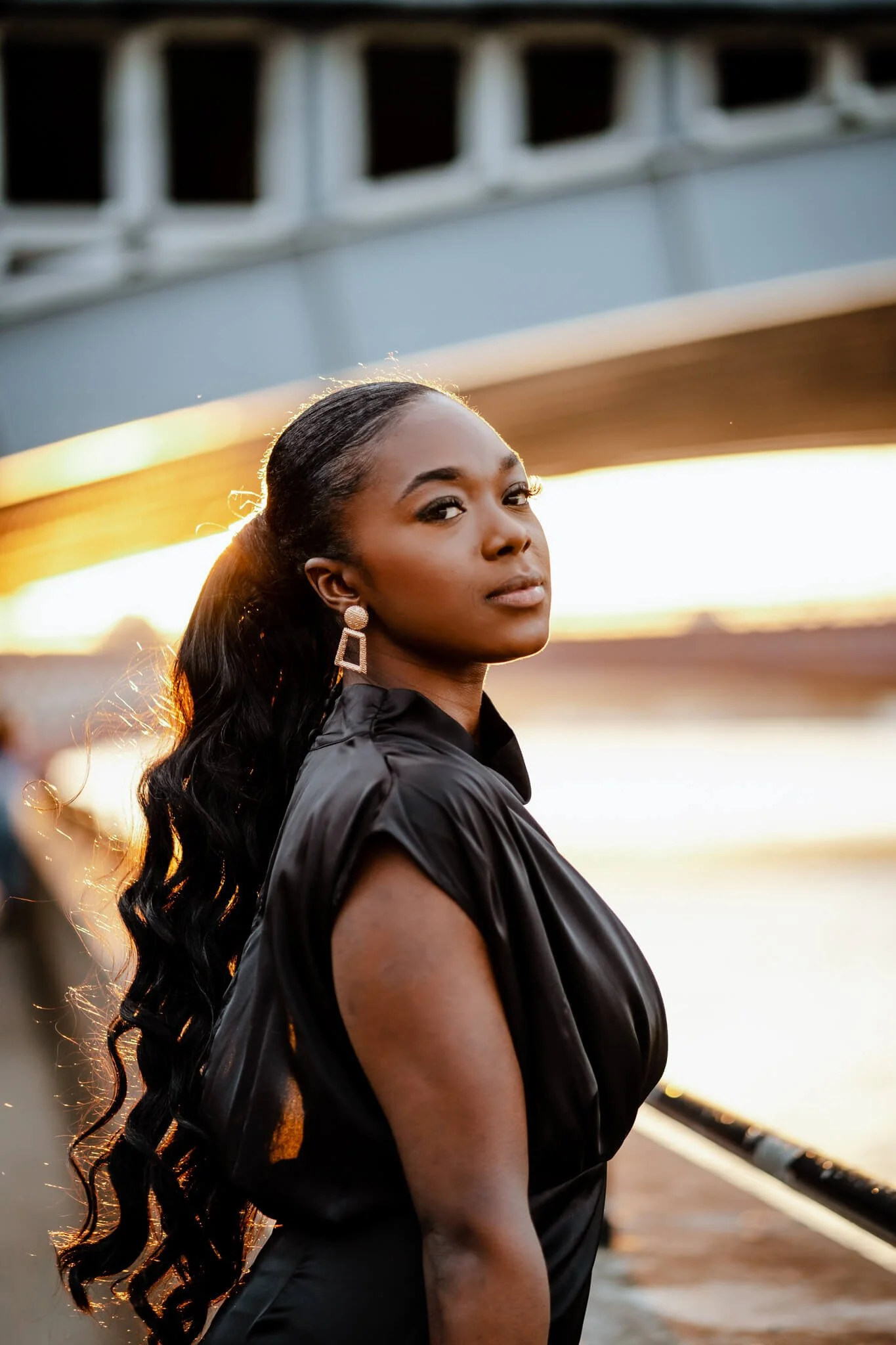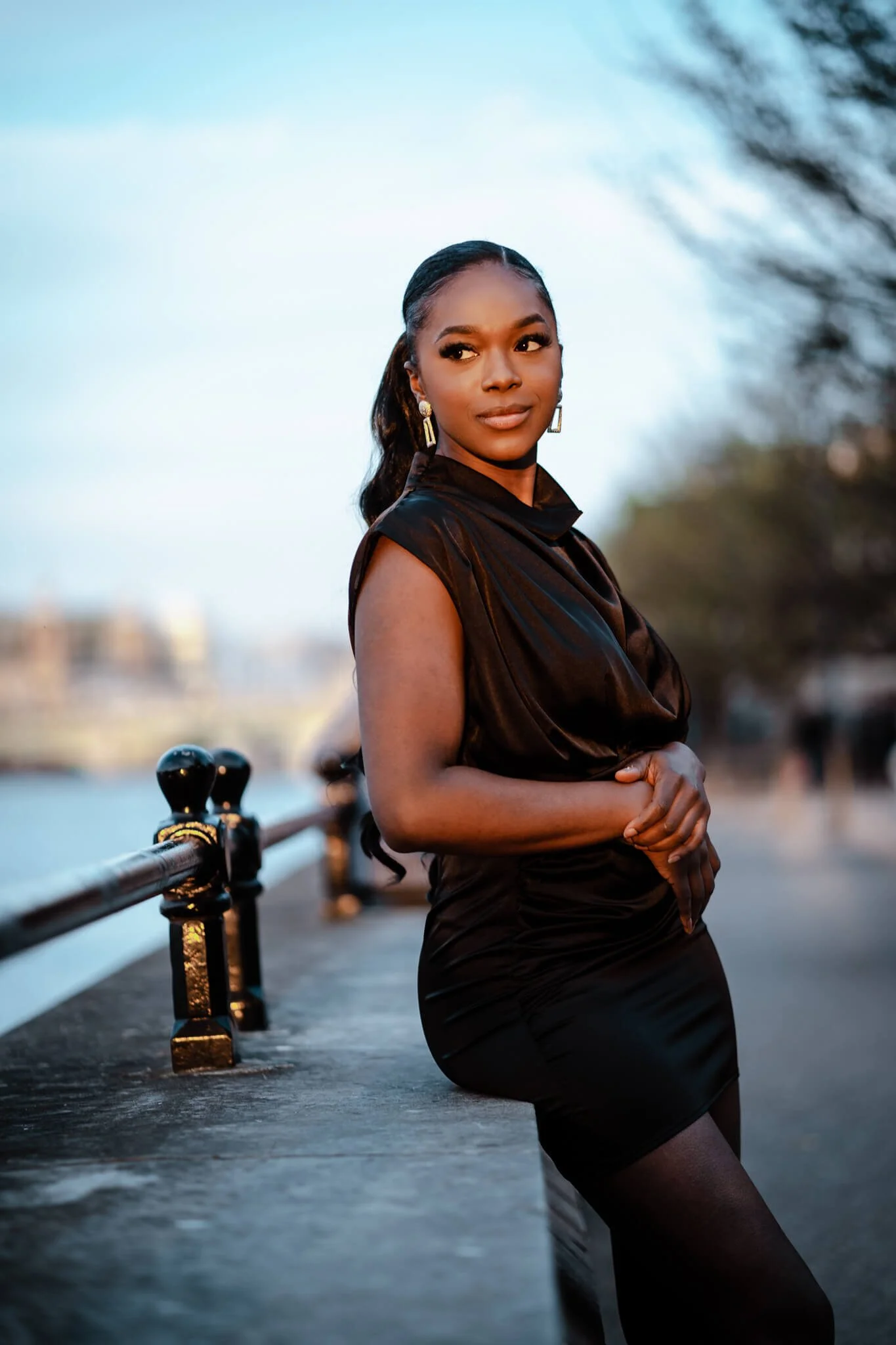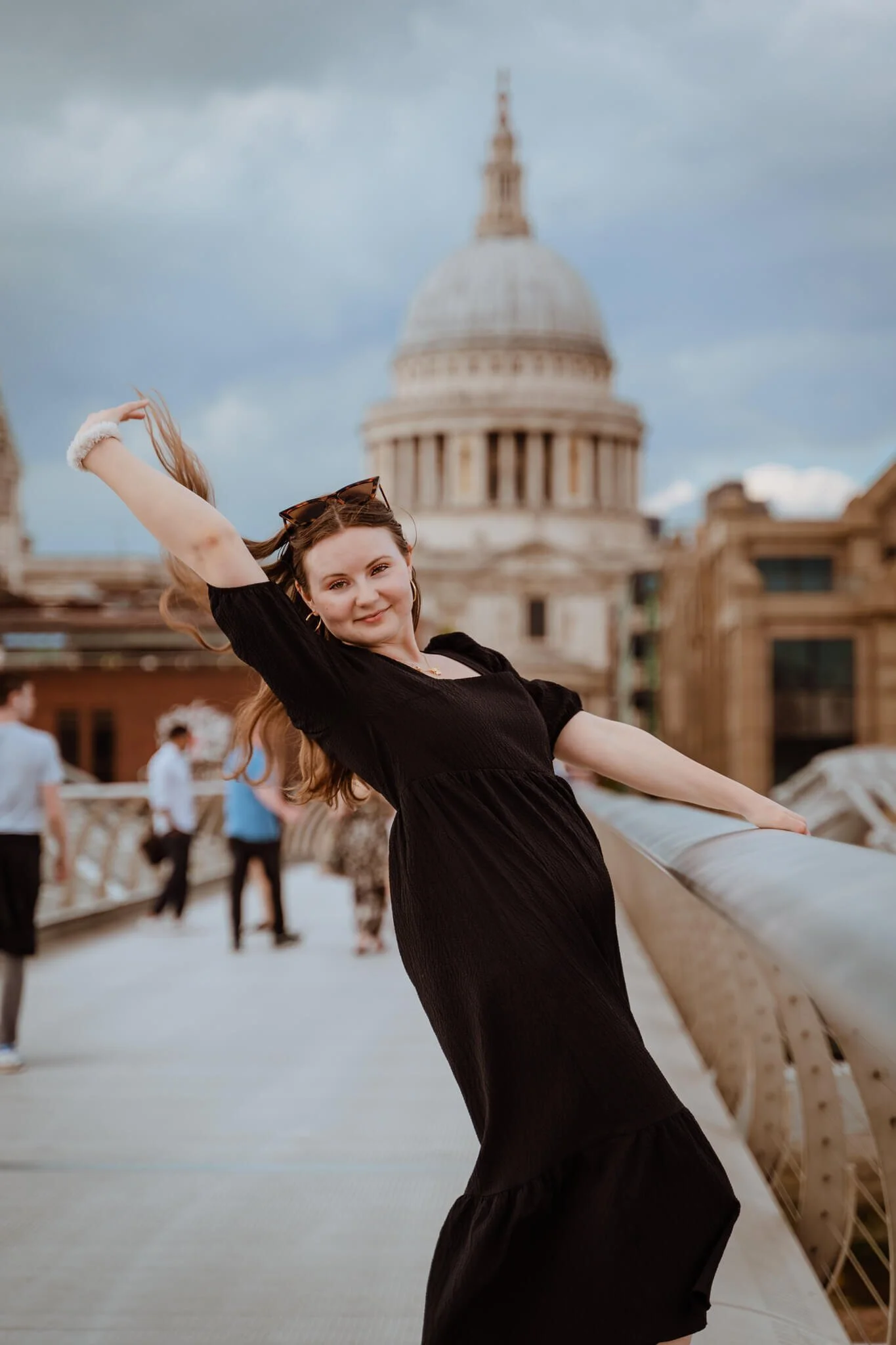What Cameras Actually Love (and What They Don’t)
This blog was originally published on 10 July 2021. We’ve updated the tips, visuals and graphics.
Cameras don’t see the world the way we do.
What feels normal in real life can look flat, distracting, or awkward on camera - and vice versa. After years behind the lens, we’ve started to spot patterns. Things that consistently work on camera, and things that don’t. It’s not about rules or rigid checklists - just practical observations that help people show up feeling confident and actually like what they see in their photos.
So here’s what we’ve found. A few honest truths about what cameras quietly love - and what they don’t.
What Cameras Love
1. Good light - and knowing when to shoot
We placed the sun behind our subject to give a rich hair-light AND evenly lighting to the face. No harsh shadows here.
Turning our subject around, towards the light, we ended up with this striking look!
Photography is literally the act of capturing light. So it’s no surprise that the quality of your photos has a lot to do with when they’re taken. Outdoor shoots can’t rely on studio lights, but the sun can still be your best friend if you plan around it.
Golden Hour - that pocket of time just before sunset - is famous for a reason. The light is soft, directional, and warm, which flatters skin tones, creates depth, and adds a cinematic feel without much effort. We often place the sun behind our subject to create a soft glow around the edges of their hair, and then adjust the angle to balance the light on the face. It’s gentle, controlled, and rarely needs editing.
But midday isn’t a disaster either. We’ve done some of our favourite shoots under bright, overhead sun - especially in built-up urban areas where the light bounces off walls and creates interesting contrast. It’s all about using the conditions you’ve got, and leaning into the look they create rather than fighting it.
2. Natural movement
Stillness might feel safer in front of the camera, but it often translates as stiffness. Some of the best portraits come from in-between moments - when someone’s adjusting their stance, brushing their hair back, or shifting their weight from one foot to the other. These aren’t poses, they’re real, human movements. The camera picks up on that energy and makes it feel alive.
We’ll always give direction - we’re not expecting you to just improvise the whole shoot - but part of our job is knowing when to keep talking and when to stay quiet. Sometimes we’ll prompt a little walk or get you to play with whatever’s around. It’s never about looking perfect. It’s about creating space for something real to show up on camera.
3. Makeup that suits the lens (and you)
Makeup is personal. There’s no one-size-fits-all look that works for every face or every shoot. But the camera does have preferences. What looks soft and glowy in person might reflect light or lose contrast in photos. So a few tweaks can go a long way.
If you don’t usually wear much, stick with light definition - mascara, brows, a bit of gloss. That alone can help bring structure without changing your face. If you’re more confident with makeup, you’ll already have a sense of what works for you, but it’s worth keeping things matte where possible. Shiny or dewy finishes might look great in natural light but can blow out in photos, especially on the forehead or nose.
Rather than following a list, just test your look in daylight before the shoot. If you love how it looks in the mirror and in your phone camera, you’re probably good to go.
4. A subtle chin lift
A surprisingly effective tip: gently lift your chin slightly forward and up. It’s not dramatic - just enough to stretch the jaw away from the neck. You’re not craning, you’re just extending. Think “string pulling you from the tip of your chin towards the lens.” It gives structure to your jawline and avoids that tucked-in look that can happen when you’re too relaxed.
There’s also a little trick we use: tongue pressed lightly to the roof of the mouth. Sounds odd, but it tightens the lower face just enough to make a difference - without straining anything. It’s one of those invisible adjustments that just… works.
5. People who are genuinely enjoying themselves
There’s no filter or setting for this - when someone is relaxed and enjoying the shoot, it shows. The eyes soften, the shoulders drop, and the whole energy shifts. You can’t fake it. And when it’s missing, even technically perfect photos can feel a bit off.
That’s why our sessions are designed to feel more like hanging out than being directed. We’ll give you space to be yourself, and if we’re doing our job right, you’ll forget about the camera entirely. Some of the best images we’ve taken are the ones where people are mid-laugh or just caught in their own moment.
What Cameras Hate
1. Tinted lenses and transitional glasses
Your eyes are the focal point of almost every portrait. They’re how the viewer connects with you. So when they’re hidden - even slightly - behind tinted or transitional lenses, that connection weakens. You might not notice it in the mirror, but on camera it’s obvious.
If you can swap to clear lenses or contacts just for the shoot, do it. Your images will feel sharper and more personal. Of course, if sunglasses are part of your look, we’ll use them intentionally - but not for every frame.
2. Tiny, high-frequency patterns
This one’s a bit technical, but worth knowing: very fine patterns, like tight stripes or micro-checks, can cause a weird distortion on camera called moiré. It makes the pattern look like it’s moving or flickering. This happens because cameras don’t capture detail in the same way our eyes do - and when the fabric’s detail is too fine, it clashes with the sensor and compresses badly, especially on social media.
It doesn’t mean you need to wear solids only, but if you’re planning a detailed outfit, just drop us a quick message beforehand. We’ll happily advise if it’s likely to cause issues.
3. Flyaways and strays
The human eye tends to filter out little imperfections in real time. The camera doesn’t. So those tiny hairs that float around your forehead or ears? They show up a lot. Especially when we’re shooting with a shallow depth of field - the background is blurred, so any sharp detail in the foreground stands out even more.
You don’t need to overstyle - just bring something to keep strays in check. A bit of taming cream or light hairspray makes a big difference, and saves us both time later.
4. Stuff in your pockets
Phones, keys, vapes - they all seem harmless until they bulge through the side of your jeans or shift the fabric of your jacket in a weird way. It’s the kind of thing you don’t notice until you’re looking at your final images and wondering why the outline of your phone ruined an otherwise great shot.
We’ll usually remind you on the day, but if you’re wearing anything fitted, best to clear your pockets at the start. Hand stuff to us or tuck it into a nearby bag. You won’t regret it.
5. Forced smiles
There’s nothing wrong with smiling in photos. But there is a difference between a real smile and a fake one - and the camera picks it up instantly. Saying “cheese” pulls your mouth into an artificial shape that rarely flatters anyone.
We’d rather get you laughing or talking about something you love. That way, if you do smile, it’s coming from a real place - and it’ll look a thousand times better. That’s also why we like to meet people beforehand or hop on a call - if we’ve already got a bit of a connection, everything flows easier on the day.
Final tip
Photoshoots shouldn’t feel like a performance. The best results come when you’re comfortable, informed, and not overthinking it. If you keep these things in mind - the ones cameras love, the ones they struggle with - you’ll give yourself a better chance of really enjoying the shoot and loving the outcome.
And if you ever want to bounce ideas around - outfits, lighting, props, whatever - we’re always down to chat. Even if you’re not booking right now, we’re happy to help you prep for a shoot that actually feels like you.
Your photoshoot, your terms








